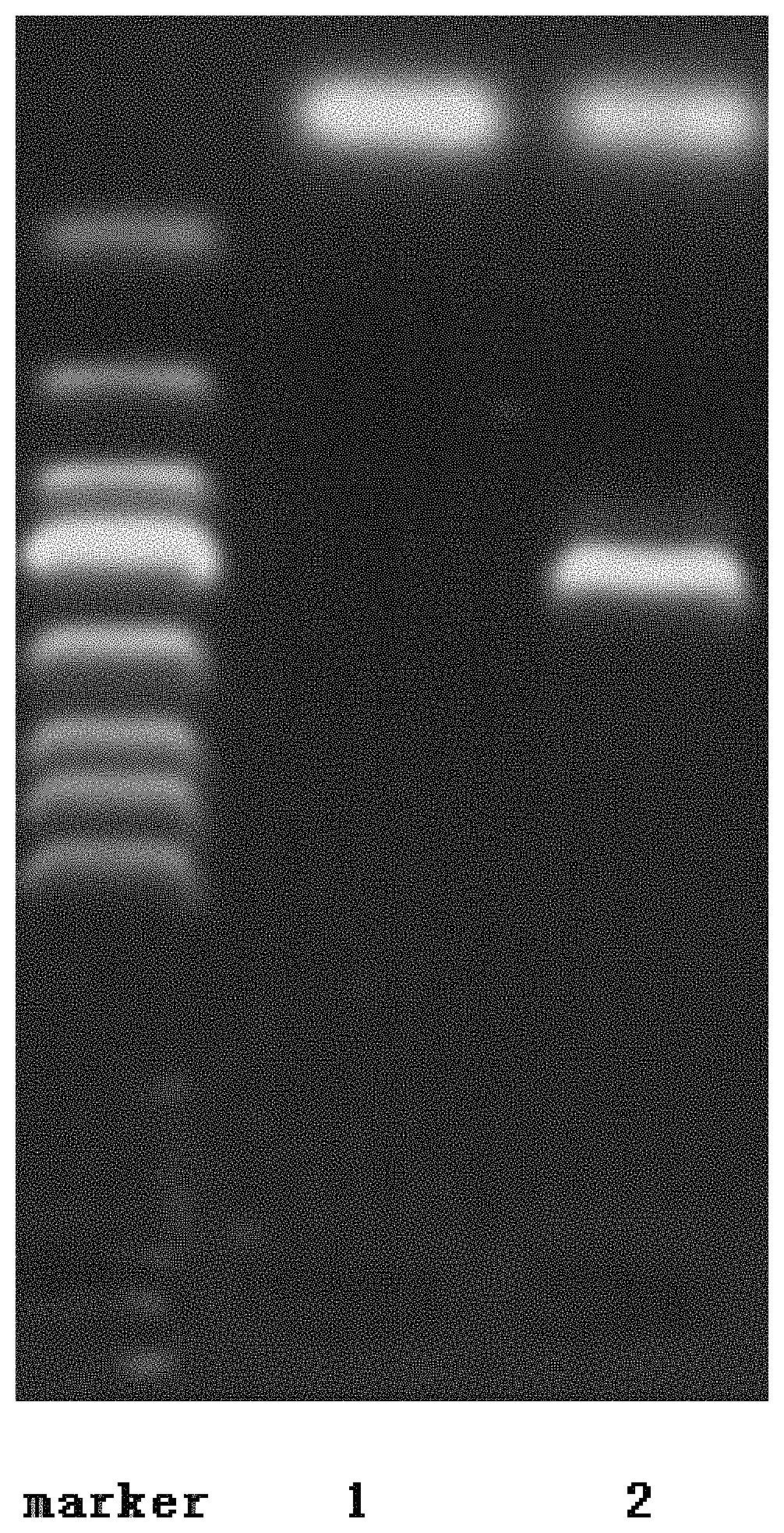Method for direct transformation of exogenous DNA into resting spores of Penicillium amagasakiense
- Summary
- Abstract
- Description
- Claims
- Application Information
AI Technical Summary
Benefits of technology
Problems solved by technology
Method used
Image
Examples
example 1
[0058]A method for direct transformation of exogenous DNA into resting spores of Penicillium amagasakiense includes the following steps:
[0059]1) Culture of Penicillium amagasakiense and Collection of Spores
[0060]In a 15-cm Petri dish, a solid agar medium (PDA medium) was prepared. Penicillium amagasakiense CICC 40341 was inoculated onto the surface of the solid agar medium and cultured at a temperature of 25° C. with 50-60% humidity for 8 days, to allow Penicillium amagasakiense spores to overgrow on the surface of the medium.
[0061]Sterilized water was poured onto the surface of the medium, to wash down the Penicillium amagasakiense spores off from the surface of the medium (by vibrating, or gently scratching with a sterilized smooth glass spreading rod). The spore suspension was aspirated with a pipette and filtered using sterilized lens paper (or fritted glass filter, filter paper, etc.) to remove the mycelia and retain the spores. The filtered liquid was placed in a centrifuge tu...
example 2
[0083]A method for direct transformation of exogenous DNA into resting spores of Penicillium amagasakiense includes the following steps:
[0084]1) Culture of Penicillium amagasakiense and Collection of Spores
[0085]In a 15-cm Petri dish, a solid agar medium (YPD medium) was prepared. Penicillium amagasakiense CICC 40341 was inoculated onto the surface of the solid agar medium and cultured at a temperature of 16° C. with 15-50% humidity for 15 days, to allow Penicillium amagasakiense spores to overgrow on the surface of the medium.
[0086]Sterilized water was poured onto the surface of the medium, to wash down the Penicillium amagasakiense spores off from the surface of the medium (by vibrating, or gently scratching with a sterilized smooth glass spreading rod). The spore suspension was aspirated with a pipette and filtered using sterilized lens paper (or fritted glass filter, filter paper, etc.) to remove the mycelia and retain the spores. The filtered liquid was placed in a centrifuge t...
example 3
[0099]A method for direct transformation of exogenous DNA into resting spores of Penicillium amagasakiense includes the following steps:
[0100]1) Culture of Penicillium amagasakiense and Collection of Spores
[0101]In a 15-cm Petri dish, a solid agar medium (PDA medium) was prepared. Penicillium amagasakiense CICC 40341 was inoculated onto the surface of the solid agar medium and cultured at a temperature of 40° C. with 60-85% humidity for 3 days, to allow Penicillium amagasakiense spores to overgrow on the surface of the medium.
[0102]Sterilized water was poured onto the surface of the medium, to wash down the Penicillium amagasakiense spores off from the surface of the medium (by vibrating, or gently scratching with a sterilized smooth glass spreading rod). The spore suspension was aspirated with a pipette and filtered using sterilized lens paper (or fritted glass filter, filter paper, etc.) to remove the mycelia and retain the spores. The filtered liquid was placed in a centrifuge tu...
PUM
| Property | Measurement | Unit |
|---|---|---|
| voltage | aaaaa | aaaaa |
| humidity | aaaaa | aaaaa |
| temperature | aaaaa | aaaaa |
Abstract
Description
Claims
Application Information
 Login to View More
Login to View More - R&D
- Intellectual Property
- Life Sciences
- Materials
- Tech Scout
- Unparalleled Data Quality
- Higher Quality Content
- 60% Fewer Hallucinations
Browse by: Latest US Patents, China's latest patents, Technical Efficacy Thesaurus, Application Domain, Technology Topic, Popular Technical Reports.
© 2025 PatSnap. All rights reserved.Legal|Privacy policy|Modern Slavery Act Transparency Statement|Sitemap|About US| Contact US: help@patsnap.com

